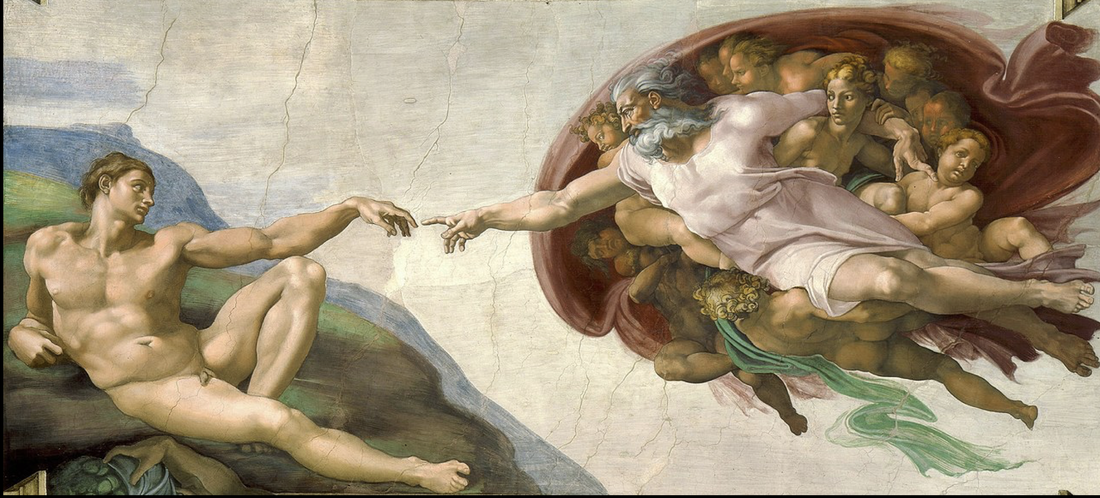|
“Let Us make humans in Our image” (Genesis 1:26)
The iconic image by Michelangelo of God creating Adam is known to every schoolchild. But have you ever noticed that underneath God's arm is a feminine figure? Does God have a gender? Is God both masculine and feminine? Many early Christians thought so, conceiving of the Divine as the Pleroma, a word that means "the Fullness", and is beyond gender. So much emphasis has been placed in the Christian tradition on God the Father. What was lost as texts were translated from Hebrew is that the Holy Spirit is a SHE. Every time Yeshua speaks of "Holy Spirit" in the New Testament, know that he used the pronoun she. Notice what happens inside of you if when you read these passages, or say the Nicene Creed, you make this simple change as well. For some people it is a visceral and powerful experience that goes straight to the core of wanting to be seen and included. The Trinity becomes not an all-male committee ( Father, Son and Holy Ghost) but a family of Father, Child and Holy Mother Spirit. Neil Douglas Klotz's revolutionary work has revealed that in Aramaic, Abwoun, the word translated as "Our Father" in the Lord's Prayer, is more accurately translated as "Parent", "Mother-Father", "Thou" or even "Birther". What happens inside of you if you shift your own words of this prayer to reflect the more accurate translations? I invite you to gaze at Michelangelo's painting again. If you are like most people, you never noticed that there was a woman in the painting of the Sistine Chapel before. As we read the texts cherished by early Christians in the early centuries, we will be discovering in this course that there may be many female figures we've never noticed before. We will also encounter other women we may have thought we knew, but we will find them in surprising places or with qualities we've never had the eyes to appreciate before. Sometimes the feminine (particularly Mary Magdalene) has been deliberately cut out, erased, or altered in the story. Sometimes, however, the feminine is hiding in plain sight. As we read through the Synoptic Gospels in the coming month, I invite you to keep a running list of all the women you have never heard of or never noticed before. Where are they? What is the quality of their relationship with Jesus? How does he interact with them? Treat the texts like an Easter egg hunt in which you will be searching for the feminine. You may discover that there are treasures waiting for you to discover. That is certainly the spirit that is present in this very accessible documentary by historians Helen Bond and Joan Taylor. Together, these well-regarded professors travel from Israel to Rome to search for missing pieces of early Christianity. I encourage you to watch it as you read through the New Testament and see if it offers another lens of perception.
0 Comments
Leave a Reply. |
Archives
June 2024
Categories |

 RSS Feed
RSS Feed